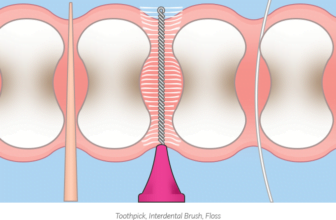What is Mesothelioma, its Symptoms, Diagnosis and Treatment?
Mesothelioma is the cancer of the mesothelial lining. Mesothelial tissue is the tissue which forms the covering or lining of several organs like lungs, abdomen, heart, etc. The mesothelioma is most commonly seen in relation to the lungs, this is known as the pleural mesothelioma. Other then this mesothelial cancer in relation to the abdominal lining is known as peritoneal mesothelioma. The occurrence of the mesothelioma is majorly related to the inhalation of the asbestos. Now, before heading towards mesothelioma we have to first know about its main cause ie, asbestos.

What is Asbestos
Actually, asbestos is a naturally occurring mineral substance that can be pulled into a fluffy consistency, it is fibrous. These fibers are soft as well as flexible but also are resistant to heat, electricity and chemical corrosion. Pure asbestos is a very strong insulator.
These are mixed with other materials like cloth, plastic, cement, paper to make them strong. Due to all these benefits, once asbestos was considered as the magical material and was seen very beneficial in the business industry. But with time, it was realized that the asbestos is highly toxic. As the microscopic fibers of the asbestos get trapped in the body tissue, they irritate the tissue and then the tissue cells change into the malignant (cancerous) form with time.
Exposure to Asbestos
There is a certain category of people who have very high exposure risk towards the asbestos. They are:
- Mining workers
- Asbestos product manufacturing industry workers
- Construction site workers
- Firefighters
- Heavy industries
- Power plant workers
- Shipbuilding company workers
- Military services
The workers who are in contact with the asbestos, must change their clothes and take a shower before leaving the workplace, because they may carry the asbestos micro fibers along with there clothes and put their families also at risk. This was a brief intro about the asbestos. If you want to know more about the asbestos and its consequences or anything else about it, write to us at the comment section below.
How Asbestos cause Health-related Issue
The microfibers of asbestos, when inhaled they get settled inside the lungs and stomach lining. These fibers are non-biodegradable so, they will continuously irritate the lining and cause malignant transformation of the cells.
A mesothelioma is an aggressive form of cancer, its treatments are still under research, still, there are several trials and tests which are continuously going on to increase the life expectancy of the patients of the mesothelioma.
Symptoms
Signs and symptoms in relation to the mesothelioma depend upon the lining of the organ it has affected, let’s see this in detail.
Pleural Mesothelioma
In this the pleural lining ie, covering of the lungs are affected, so the symptoms shown in this case are,
- Chest pain
- Coughing, mostly painful
- Shortness of breath
- Unusual lump under the skin of the chest
- Weight loss( excessive, unexplainable)
- Coughing up blood
- Difficulty swallowing food
- Swelling in face and arm
- Fever, night sweats
- Lower back rib region painful
Peritoneal Mesothelioma
In this, the lining of the abdomen gets affected, that means peritoneal lining. The signs and symptoms include.
- Abdominal pain can occur
- Swelling of the abdomen
- Presence of nausea
- Excessive Weight loss can be seen
Pericardial Mesothelioma
This is a very rare form but shows the symptoms of chest pain and shortness of breath.
The most common form of mesothelioma is as the pleural mesothelioma, so let’s try to understand it in detail.
Pleural Mesothelioma
Most commonly males are affected with pleural mesothelioma, the reason behind this is, the male dominant workforce in professions like mining and constructions. In Initial Stage of the disease, the symptoms such as chest pain, shortness of breath can be seen but these do not consider as alarming symptoms by the person, which leads to the aggressive outcome of the disease. Usually, the appearance of the noticeable symptoms, which shows the transformation of the normal cells into malignancy takes up to 40 to 50 years, it is a slowly progressive disease.
Diagnosis of Mesothelioma
It is difficult to diagnose this disease because the occurrence is rare and also the initial symptoms can be easily confused with flu, cold or bronchitis.
In this case, the history related to the asbestos exposure plays a significant role in taking the investigation further, so the patient must be clearly asked about their work history. Other then that there are several tests which are considered to diagnose the disease, these are
Chest X-Ray
The chest x-ray can indicate the presence of irregular lumps in relation to the pleural lining (lining of the lungs). But this will only be an indicative test this will not confirm the presence of the malignancy or cancer.
Similarly, CT Scan and MRIs can indicate the irregular pattern formation in relation to the lining of the lungs, but can not explain the actual cause behind it.
Biopsies
A biopsy is the surgical removal of the tissue cells which have to be tested for analysis. A biopsy is the gold standard test for the diagnosis of the mesothelioma. According to the ASCO 2018 pleural mesothelioma treatment guidelines, the malignant cells must be tested by using immunohistochemistry.
It allows identifying the presence or absence of the cell markers, to confirm the mesothelioma diagnosis and to rule out another disease.
The types of biopsies can be:
- Video-assisted thoracoscopic surgery (VATS)
- Draining the fluid build up from the lungs
- Fine needle biopsy
Blood Test
In the blood test, there are certain proteins and other substances which are seen that indicates the presence of mesothelioma. These tests which are currently available are named as:
- MESOMARK
- SOMAmer
- Human MPF
All the blood tests have their own pros and cons, no test is completely confirmatory about the mesothelioma. Hence, the biopsies are the gold standard test.
Stages of the Mesothelioma
Staging is a very important step. It allows to plan the treatment and to judge the prognosis or the outcome of the treatment. There are four stages in which the mesothelioma can be divided.
First Stage
It is the earliest stage of the occurrence, the tumor remains localized at the lining tissue of the lungs and the life expectancy in this stage is much higher (various years) then the further stages.
Second Stage
In this, the cancer cells start entering into the lymph nodes, the life expectancy is about 15 – 20 months.
Third Stage
Cancer cells start spreading to the nearby tissue cells, and also the spread into the distant lymph nodes. In this, the life expectancy is about one year to 15 months. But the last and most aggressive stage is the 4th stage.
Fourth Stage
In this which the life expectancy, even with proper treatments is only a few months. In this the cancerous cells spread to the distant organs.
Treatment of Mesothelioma
The treatment is decided according to the stage of the disease. There are three types of approaches toward mesothelioma: Chemotherapy, radiotherapy, surgical treatment
Chemotherapy
In this various dose of the medicine are injected through intravenous route into the bloodstream and is effective to kill the cancerous cells in the body.
Radiotherapy
In this, high energy particles are used eg X-Rays, Gamma Raysor protons, which kill the cancerous cells.
Surgical Therapy
There could be different approaches,
- Extrapleural pneumonectomy EPP
- Pleurectomy P/D
- Cytoreductomy
Extrapleural Pneumonectomy
In EPP the removal of the cancerous lung and all nearby areas where mesothelioma spreads is done by the surgeon, also they remove the nearby structures like lymph nodes, chest lining, and the diaphragm to avoid the recurrence.
Pleurectomy P/D
In this type of surgery, the lungs are spared and only the cancerous parts of the pleural lining is removed.
Cytoreductive Surgery
In this, the removal of the cancerous cells is done from the lining of the abdomen. It is also known as the debulking surgery or the peritonectomy, this procedure is often followed by the heated chemotherapy.
Palliative care
The palliative care means that the therapy is given to support the health of the person and decrease the suffering and improve the quality of life. If the malignant or cancerous cells have spread to such an extent that it is stage 3 and 4. Then typically doctors recommend palliative treatment options, which can reduce the suffering of the patient. In this, the pain decreases, breathing stabilizing done and symptoms decreased to improve the quality of life.
This was a brief view of every aspect of the mesothelioma. We will try to elaborate and specifically provide details about different topics. If you have any question, then you can share at the comment section below.





